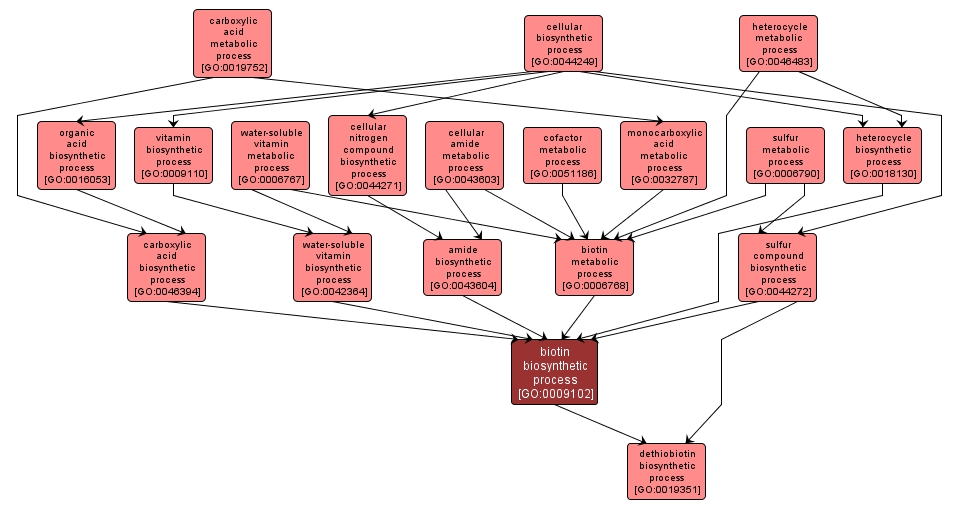GO TERM SUMMARY
|
| Name: |
biotin biosynthetic process |
| Acc: |
GO:0009102 |
| Aspect: |
Biological Process |
| Desc: |
The chemical reactions and pathways resulting in the formation of biotin, cis-tetrahydro-2-oxothieno(3,4-d)imidazoline-4-valeric acid. |
Synonyms:
- vitamin B7 biosynthetic process
- biotin synthesis
- vitamin H biosynthesis
- vitamin H biosynthetic process
- biotin formation
- biotin anabolism
- biotin biosynthesis
- vitamin B7 biosynthesis
|
|

|
INTERACTIVE GO GRAPH
|














